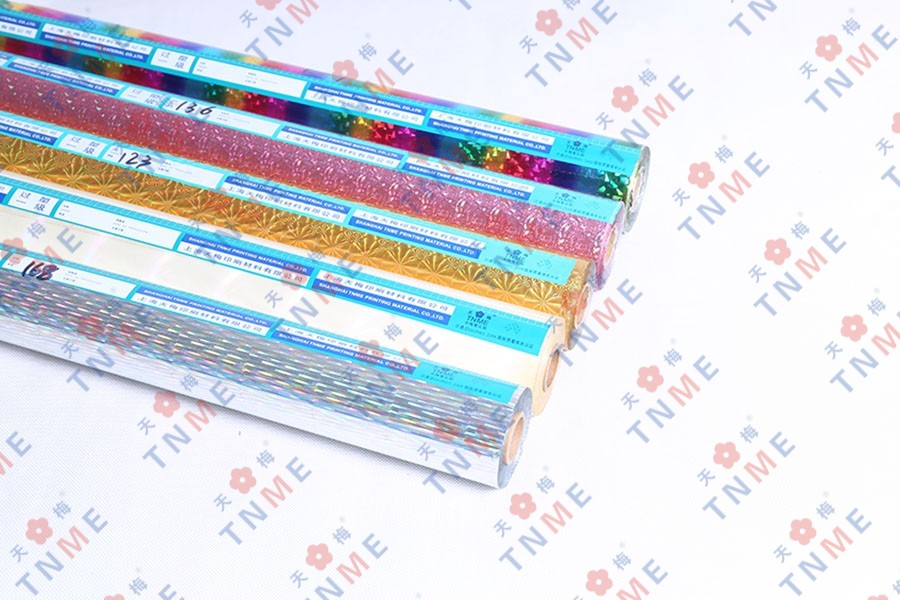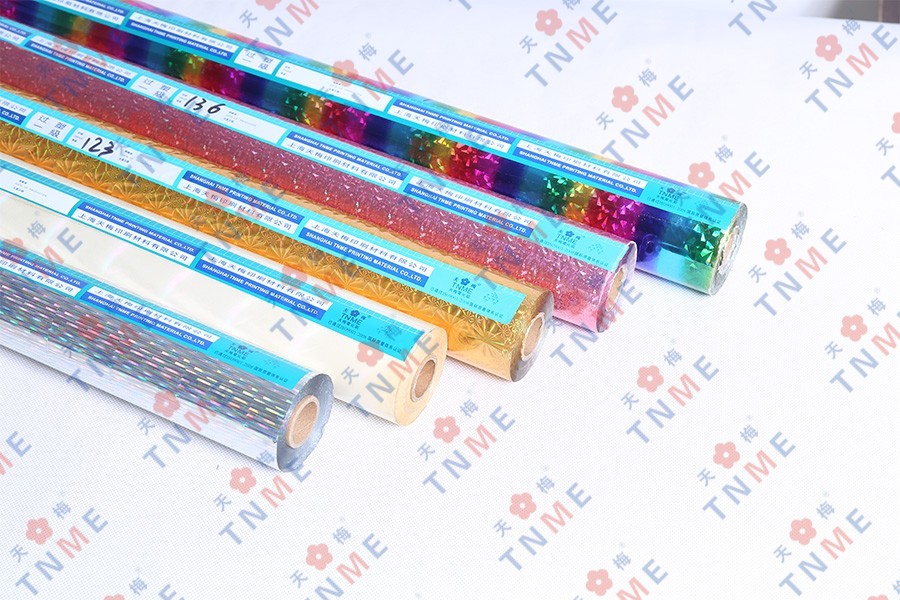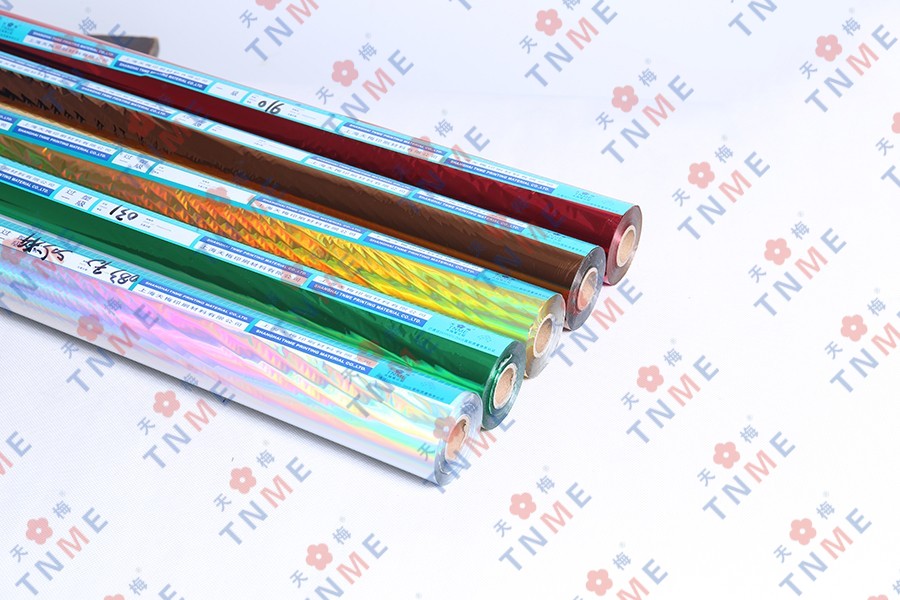What is the Difference Between Holographic Foil and Laser Pearl Foil?
In the world of advanced packaging and decorative materials, visual appeal is often the first point of engagement with a consumer. Metallic and iridescent finishes have become powerful tools for brands seeking to convey luxury, innovation, and quality. Among these finishes, two terms frequently surface, sometimes used interchangeably but representing distinctly different technologies and visual effects: holographic foil and laser aluminized film pearl foil. For wholesalers, buyers, and product designers, understanding the fundamental differences between these materials is not a matter of semantics; it is crucial for making informed sourcing decisions, controlling costs, and achieving the desired market impact.
Understanding the Core Technology: Manufacturing Processes
The most significant differentiator between holographic foil and laser aluminized film pearl foil lies in their fundamental manufacturing processes. This production stage dictates not only their appearance but also their physical properties and cost structure.
The Holographic Foil Production Process
Holographic foil is created through a complex process centered on the principle of optical interference. The production begins with a transparent film substrate, such as polyester (PET) or polypropylene (OPP). The key step involves embossing. A master shim, which contains a meticulously etched microscopic pattern of grooves and ridges, is used to stamp this pattern onto the film surface under high heat and pressure. This pattern is designed to diffract light, breaking it into its constituent colors like a prism. Following embossing, the film undergoes vacuum metallization. In a sealed chamber, a layer of aluminum is vaporized and evenly deposited onto the embossed surface. This thin, reflective aluminum layer is essential, as it reflects the light through the embossed pattern, creating the characteristic rainbow-color, three-dimensional, and often graphic-intensive holographic effect. The specific imagery—whether it be geometric patterns, logos, or random dots—is entirely determined by the master shim used during the embossing stage. This process is highly specialized and often requires significant setup for custom patterns.
The Laser Aluminized Film Pearl Foil Production Process
In contrast, laser aluminized film pearl foil achieves its effect through a different mechanism that prioritizes a soft, diffuse pearlescence over sharp graphic patterns. The process also begins with a film substrate, commonly nylon (BOPA) or polyester (PET), chosen for its strength and clarity. The first unique step often involves coating the film with a layer of pearl pigments. These pigments are typically mica-based particles coated with metal oxides, such as titanium dioxide or iron oxide. These platelets are oriented parallel to the film surface. Subsequently, the film undergoes vacuum aluminization, where a precise, ultra-thin layer of aluminum is deposited over the pearl pigment layer. The interaction between light, the pearl pigments, and the aluminum layer is what creates the signature effect. The pearl pigments provide a soft, luxurious shimmer and opacity, while the aluminum layer beneath adds depth and a bright, metallic reflectivity. The term “laser aluminized” refers to the highly controlled, precise application of the aluminum layer, ensuring exceptional uniformity and consistency across the entire roll. The visual result is a homogeneous, elegant pearl-like shine with a metallic base, devoid of the specific graphic patterns found in holographic foils.
A Comparative Analysis of Visual and Aesthetic Properties
The divergent manufacturing methods naturally lead to starkly different visual outcomes. This is the most apparent differentiator for buyers and designers.
Holographic foil is defined by its dynamic, high-energy appearance. It is inherently graphic and patterned. When viewed under a light source, it displays a brilliant, shifting rainbow spectrum of colors. The effect is kinetic; as the viewing angle changes or the material is moved, the colors and patterns appear to move and transform. This can range from sharp, distinct patterns like stars and logos to a more generalized “rainbow” or “starburst” effect. The visuals are high-contrast and attention-grabbing, designed to create a immediate “wow” factor. However, this can sometimes overwhelm detailed text or intricate brand logos printed on top of it.
Laser aluminized film pearl foil offers a more subdued, sophisticated, and consistent aesthetic. Its appearance is characterized by a soft, satiny sheen that mimics the natural luminescence of a pearl. The color shift is typically more monochromatic and subtle, often flowing between soft silvers, champagnes, and rose golds depending on the specific pearl pigment used, all anchored by a bright metallic base. The effect is homogeneous across the entire surface, with no embedded patterns or distinct graphics. This provides a luxurious, high-quality backdrop that enhances brand elements without competing with them. It excels at conveying elegance, purity, and premium quality, making it a preferred choice for high-end consumer goods where a timeless aesthetic is desired over a transient, flashy one.
Functional and Performance Characteristics
Beyond aesthetics, these foils serve functional roles in packaging, particularly as barriers. Their performance differs due to their material structure.
Holographic foil, particularly when based on OPP or PET substrates, provides excellent light barrier properties, which is crucial for protecting light-sensitive products. It also offers good moisture and oxygen barrier properties, which can be further enhanced through coatings and laminations. The embossed pattern, however, can potentially create micro-thin points in the structure, though this is typically mitigated by the metallization and subsequent coating layers. Its primary function is often decorative, with barrier properties being a valuable secondary benefit.
Laser aluminized film pearl foil is often engineered with performance as a core consideration. When a nylon substrate is used, the material exhibits exceptional strength, puncture resistance, and toughness. The combination of the nylon film, pearl coating, and precise aluminum layer creates an outstanding barrier against oxygen, moisture, and light. This makes it a highly functional choice for applications where product integrity is paramount, such as in the packaging of sensitive foods, pharmaceuticals, and medical devices. Its high barrier properties are a key selling point beyond its visual appeal. The surface of pearl foil is generally smooth and uniform, making it an excellent substrate for subsequent printing and lamination processes, as inks adhere cleanly and consistently.
Application and End-Use Scenarios
The choice between these two materials is ultimately dictated by the application and the message a brand intends to send.
Holographic Foil is ideally suited for:
- Giftware and Seasonal Packaging: Its festive, energetic look is perfect for holiday wrapping, gift bags, and celebratory products.
- Confectionery and Snack Foods: Often used for limited-edition releases or brands targeting a younger demographic to create excitement and stand out on the shelf.
- Security and Authentication: Holographic imagery is difficult to replicate, making it a common feature on labels for pharmaceuticals, electronics, and software as an anti-counterfeiting measure.
- Promotional Materials and Labels: Used for attention-grabbing labels, stickers, and point-of-sale materials where high visual impact is the primary goal.
Laser Aluminized Film Pearl Foil is ideally suited for:
- Premium Food Packaging: Its elegant appearance and high barrier properties make it ideal for coffee, gourmet foods, pet food, and nutritional supplements where both protection and a premium image are required.
- Cosmetics and Personal Care: The luxurious, soft-focus sheen is highly valued in packaging for perfumes, skincare, and makeup, conveying purity and quality.
- Pharmaceutical and Medical Packaging: The combination of its high barrier performance, material strength, and clean, professional appearance makes it a reliable choice for medical pouches and blister pack lidding.
- Technical and Industrial Laminates: Used in applications requiring durable, reflective, and barrier properties beyond consumer packaging.
Cost and Sourcing Considerations
From a sourcing perspective, the cost drivers for these two materials differ. Holographic foil cost is heavily influenced by the complexity and customization of the embossing shim. Custom holographic patterns require significant upfront engineering and tooling costs, making them more expensive for short runs but more cost-effective in very long production runs where the setup cost is amortized. Standard, stock holographic patterns are more readily available and cost-competitive.
The cost of laser aluminized film pearl foil is primarily driven by the raw materials, namely the type and density of the pearl pigments and the quality of the film substrate (e.g., nylon is typically more costly than OPP). The precision of the aluminization process also contributes to the cost. It generally offers a consistent price point that is less dependent on custom tooling. Its value proposition is often justified by its dual role as both a high-end decorative finish and a high-performance barrier material, potentially reducing the need for additional functional layers in a packaging structure.




 English
English 中文简体
中文简体

















